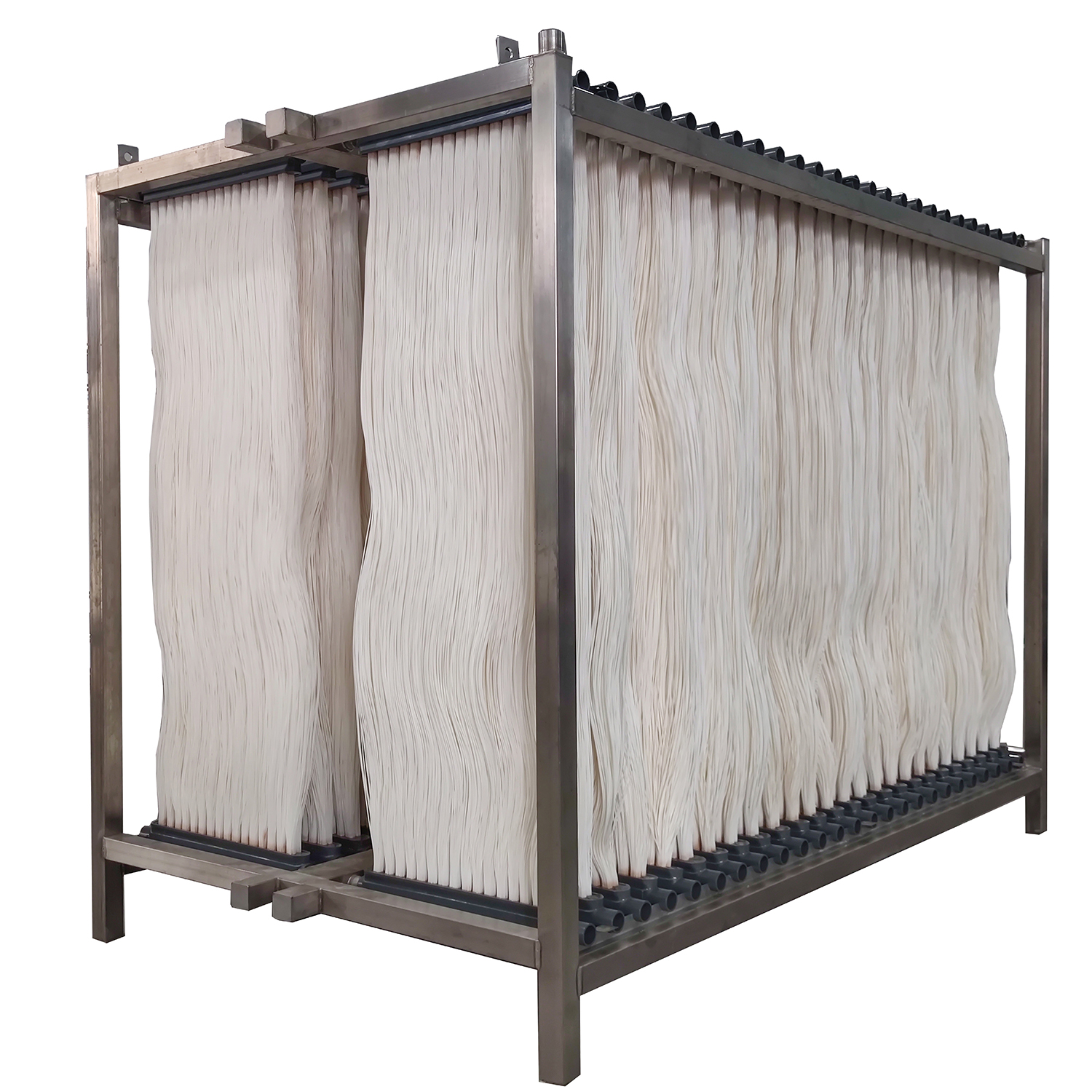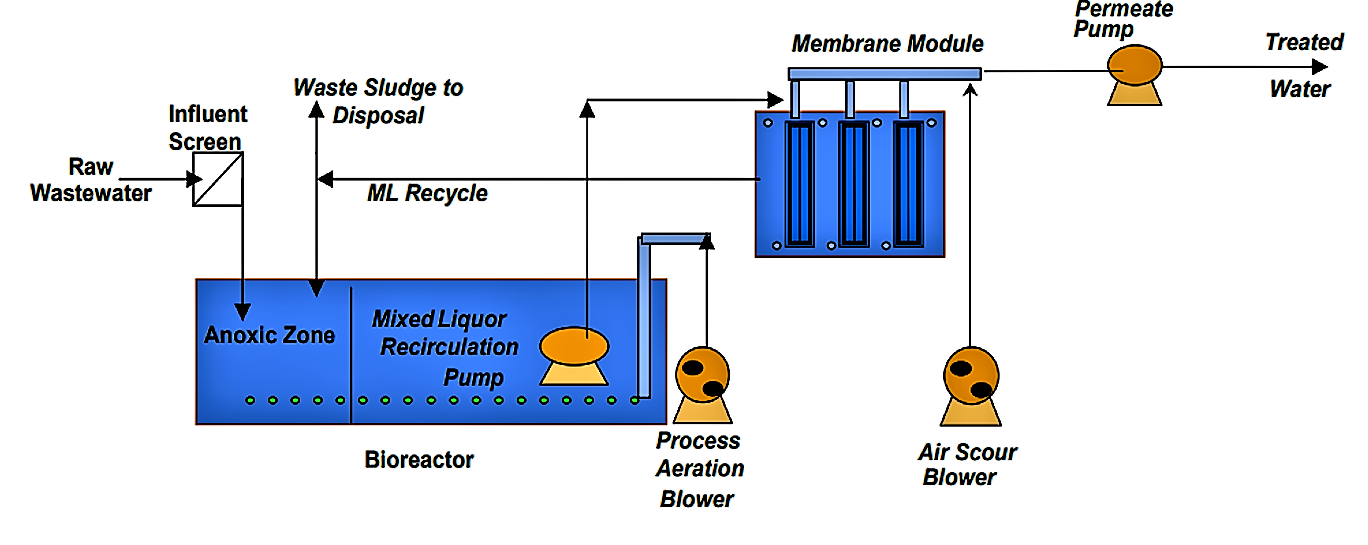How to Optimize Membrane Bioreactor Performance for Maximum Efficiency
How to Optimize Membrane Bioreactor Performance for Maximum Efficiency
Blog Article
How Membrane Layer Bioreactors Are Reinventing Water Filtration Equipments
The appearance of membrane bioreactors (MBRs) stands for a considerable innovation in the field of water purification, combining organic therapy processes with cutting-edge membrane filtering innovations. As worldwide water scarcity magnifies, the role of MBRs in helping with potable water reuse and sustainable water management ends up being progressively critical.
Review of Membrane Bioreactors
Membrane layer bioreactors (MBRs) represent a considerable advancement in water purification technology, as they incorporate biological therapy processes with membrane layer filtration. This integration improves the effectiveness of wastewater treatment by making use of microorganisms to weaken natural pollutants while all at once employing semi-permeable membranes to separate cured water from suspended solids and virus.
The MBR system normally contains an organic reactor where the microbial populace metabolizes contaminants, adhered to by a membrane layer filtration device that keeps biomass and permits just tidy water to travel through. This twin capability leads to greater effluent high quality compared to traditional treatment methods. MBRs can be run in both set and continuous flow modes, supplying flexibility in layout and application.
In Addition, MBRs are characterized by their small footprint, making them suitable for city setups with space restraints. Membrane Bioreactor. They likewise enable the recovery of water for reuse, therefore adding to water sustainability campaigns. While MBR innovation has obtained appeal in commercial and community applications, its functional complexities and energy demands require cautious factor to consider throughout implementation. Generally, MBRs are at the forefront of improving water therapy efficiency and quality, showcasing the potential for innovative solutions in environmental administration.
Advantages of MBR Innovation
The combination of organic therapy with membrane layer purification uses many advantages for water filtration processes. Among the primary advantages of Membrane Bioreactor (MBR) modern technology is its capacity to effectively eliminate both inorganic and natural impurities, leading to high-grade effluent. The membrane layers serve as a physical obstacle, preventing suspended solids and pathogens from passing through, which enhances the total security and integrity of cured water.
Furthermore, MBR systems require a smaller sized footprint contrasted to standard therapy methods, enabling extra reliable area use. This portable style is particularly helpful in city settings where land is restricted. MBRs likewise show operational versatility, accommodating varying influent high qualities and circulation rates without significant performance destruction.
In addition, the procedure offers enhanced nutrient removal abilities, specifically for nitrogen and phosphorus, which are vital for avoiding eutrophication in getting waters. The reduced sludge production connected with MBR modern technology likewise equates to decrease disposal expenses, making it a cost-effective solution in the future - Membrane Bioreactor. Generally, the benefits of MBR technology setting it as a leading choice for ingenious and sustainable water filtration systems, addressing both environmental and economic worries
Applications in Water Purification
Applications of Membrane Layer Bioreactor (MBR) technology in water filtration are impactful and diverse, attending to various treatment needs across several sectors. MBRs efficiently combine biological therapy procedures with membrane filtration, making them excellent for municipal wastewater treatment, industrial effluent administration, and also drinkable water reuse campaigns.
In community setups, MBRs are significantly used to boost the top quality of dealt with wastewater, enabling for conformity with stringent discharge laws and facilitating the recycling of water for watering and non-potable usages. Their small layout likewise makes them suitable for metropolitan atmospheres where space is restricted.
Industrially, MBR technology is made use of to treat procedure water and wastewater, particularly in markets such as food and drink, pharmaceuticals, and fabrics. By successfully removing contaminants and put on hold solids, MBRs aid sectors lessen ecological effects while recuperating valuable resources from wastewater streams.
Moreover, MBRs are acquiring traction in decentralized water therapy applications, where small systems can be released in remote areas or developing areas. This versatility enables areas to achieve lasting water monitoring options, improving access to tidy water while minimizing reliance on typical treatment techniques.
Instance Researches and Success Stories

In another example, a fabric production center in Bangladesh adopted MBR innovation to address its wastewater obstacles. The system reduced chemical oxygen need (COD) degrees from 1,200 mg/L to less than 100 mg/L, thus satisfying governing criteria and dramatically minimizing environmental influence.
The College of Cape Community's MBR setup has actually confirmed reliable in dealing with greywater for non-potable reuse on university. This task not only preserves safe and clean water however likewise functions as an instructional version for sustainable techniques.
In addition, a fish and shellfish processing plant in Norway made use of MBR technology to deal with effluents containing high degrees of natural issue, accomplishing over 90% pollutant elimination. These situation research studies highlight MBR innovation's versatility and its vital function in enhancing water high quality across varied applications.
Future of Water Treatment Solutions
As global water scarcity and pollution difficulties heighten, innovative water treatment services are becoming significantly vital to make sure sustainable access to tidy water. The future of water therapy depends on the integration of sophisticated modern technologies that enhance the efficiency and efficiency of purification processes. Membrane bioreactors (MBRs) are at the forefront of this evolution, integrating biological therapy with membrane layer filtering to create high-grade effluent appropriate for various applications.

Emerging fads such as source recuperation from wastewater, including nutrients and energy, will certainly further transform treatment centers into eco-friendly centers. Improvements in nanotechnology and membrane layer products guarantee enhanced performance and longevity of purification systems.

Final Thought
In conclusion, membrane bioreactors stand for a considerable improvement in water purification technologies, properly combining organic therapy with advanced membrane layer filtration. The countless benefits, consisting of improved effluent quality and minimized spatial demands, make MBRs particularly suitable for metropolitan applications. Their role in safe and clean water reuse and sustainable water monitoring highlights their significance in addressing international water shortage obstacles. Proceeded r & d will better improve the efficacy and adoption of MBR innovation, making certain a resilient future for water Read Full Report treatment options.
The introduction of membrane bioreactors (MBRs) stands for a significant advancement in the field of water filtration, merging biological treatment processes with advanced membrane layer filtration technologies. As international water deficiency heightens, the role of MBRs in helping with safe and clean water reuse and sustainable water administration comes to be progressively essential. They additionally make it possible for the recovery of water for reuse, hence contributing to water sustainability campaigns.As international water scarcity and air pollution difficulties escalate, innovative water therapy remedies are ending up being increasingly important to guarantee lasting access to clean water. Their function in drinkable water reuse and lasting water Website management highlights their significance in resolving international water deficiency challenges.
Report this page